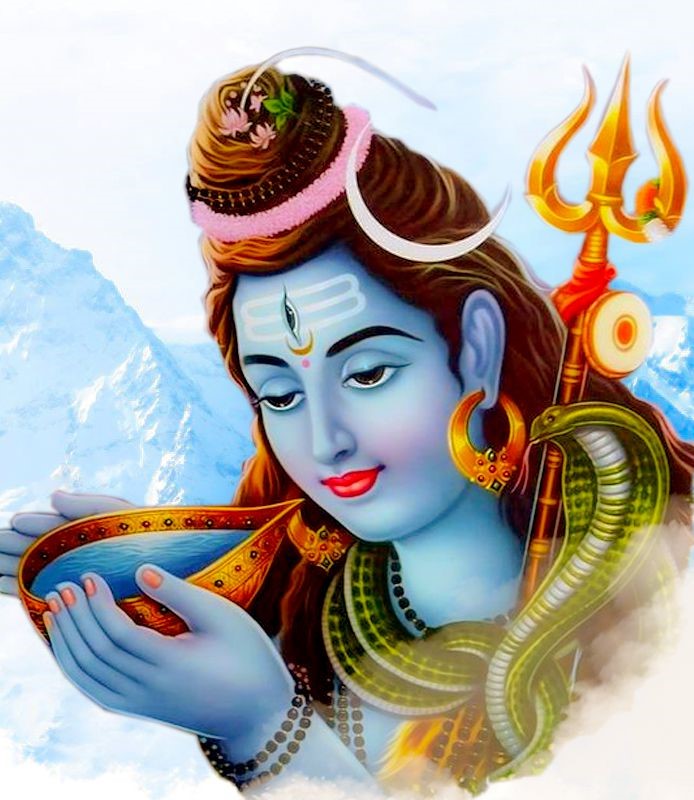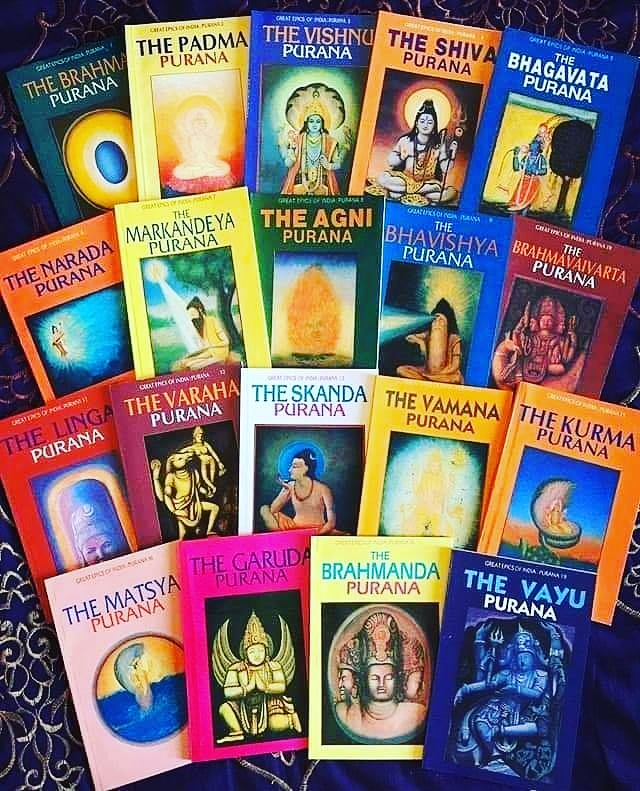Series on Shiva the Supreme!
This article is based on Shiva Purāṇa‘s Vidyeśvara Samhitā.
Śaunakaadika (representative of ‘Śaunaka’ group of sages): Respected Sūta Mahāṛṣi, devotees of every God or Goddess are always
a) curious to know more and more about their believed and respected divine powers and
b) willing to perform devotional activities to please, their Gods or Goddesses.
Please brief us about ‘how can Shiva devotees try to please Lord Shiva, The Supreme divine Power’.
Sūta: All Vedopaṇiśadic Gods are theoretical concepts or philosophical entities. The word ‘Shiva’ means pure, holy, pavitra or austere. The Vedic God Supreme is defined as the immortal, infinite energy (super power, śakti) which always exists (Yad bhūtaṁ, Yad cha bhavyaṁ). The format of God Supreme’s presence is either manifested or unmanifested. e.g. before the Big-Bang and birth of the presently manifested our Universe, this ‘energy’ must be existing in the unmanifested form. Further, such manifested form of ‘God Supreme’ is known to possess three sthūla meaning gross physical characteristics (viz. utpatti, sthiti and laya meaning birth, life-span and death). The God Supreme present in intelligent ‘living species’ formats also possesses three sūkśma meaning subtle mental (conscious behavioural pattern type) characteristics viz. satva, rajas and tamas tendencies. These subtle characteristics are not found in non-living objects. Only ‘tamas’ in the sense of ignorance can be identified to be present in the non-living objects.
Majority of happenings in this universe, happen following certain Laws of Nature. Therefore, Vedic sages attribute these occurrences as actions of an intelligent (kartā) ‘creator’. This hypothetical creator (and evolution manager) is named as Brahmā (or Brahmadeva). Similarly, the hypothetical guardian of these ‘creations’ (dhartā) is named as Viṣṇu and the hypothetical dissolver (hartā, or destroyer of these ‘creations’, at the end of their life-span) is named as Śankara (meaning blissful performer) or Shiva (meaning holy). In fact, all these three activities are carried out by the unique power called God Supreme. Brahmā, Viṣṇu and Shiva are names given to three roles being performed simultaneously by the God Supreme himself.
Universes (and every living and non-living objects residing in them) after birth, keep on aging and evolving with time, following some Laws of nature. The living species, especially human beings, are seen to possess the three sūkśma subtle characteristics viz. 1) Satva guṇa, (saintly attitudes, God fearing reluctance from sinning, non-selfishly helpful attitude towards all other humans, animals and birds) 2) Rajo guṇa (Pride, desire to ‘show off’ own abilities like cleverness, fortunes etc., intuitive creativity, business minded calculations of profitability of actions etc.) and 3) Tamo guṇa (laziness, sleepiness, cruelty, sarcastic, extremist tendencies etc.).
Lord Shiva is defined to represent exemplarily divine Tamo guṇa characteristics of Mother Nature. Therefore, he represents ‘tama’ meaning Extremes or Maximums e.g. ‘Gurūtama’ means largest possible, ‘Laghutama’ means smallest possible, etc. Lord Shiva thus represents extreme or maximum possible holy characteristics. Lord Shiva is omnipresent in the Universe. Consequently, he must be present within every human personality including every one of his devotees. A Shaiva devotee therefore must try to understand, feel, realize and visualize Lord Shiva’s presence in both these fashions. i.e.
a) Extrovertly Lord Shiva’s omnipresence, everywhere in the Universe, including the space and
b) Introvertly, within the devotee’s own body, mind, heart and personality.
Highest level of information about the Vedic concept named ‘Lord Shiva’ is available in
a) Vedic Rudra Sūkta (famous as chamaka and namaka mantras) and
b) in numerous Upaniṣad texts related with him e.g. Iśāvāsyopaniṣad, Rudropaniṣad, Mānḍukyopaniṣad, Śivopaniṣad, Kālāgni-rudropaniṣad, Daxiṇāmūrtyopaniṣad, Pāśupata-brahmopaniṣad, Kathā-rudropaniṣad, Rudra-hṛudayopaniṣad, Lingopaniṣad, Nīla-rudropaniṣad, etc.
Next level of information about Lord Shiva, in comparatively simpler language, is available in Paūrāṇic literature. Some Purāṇa’s focussed on him are Shiva Purāṇa, Linga Purāṇa, Skanda Purāṇa, etc. The presence of Lord Shiva within one’s own personality needs to be intellectually understood and mentally experienced by every human soul in his own self (e.g. understanding and using the four mahāvākya’s : ‘Aham Brahmasmi’, ‘Tat Tvam Asi’, ‘Ayam Ātmā Brahma’ and ‘Prajñyānam Brahma’).
This may possibly be practically realised as follows.
a) As the experiencer of the deep sleep state of one’s self-awareness.
b) As the experiencer of the deep peace and satisfaction in the ‘Samādhi’ state, (‘Ashṭānga Yoga’) or
c) As the performer of extremely active fully engrossed state of dancing : Naṭarāja.
Sir M. Vishveshvarayyā used to advise ‘Always perform every action in such a way that, it becomes the best ever possible way of its performance’. In Vedic terminology, this advice means ‘everyone should always work in a fashion as if the work is ideally being performed by the divine power like Lord Shiva himself’.
Following strict physical and mental disciplines all 365 days of the year, is not possible for a vast majority of Shiva devotees. Therefore, some special days are recommended for their convenience. Special devotional activities like ‘vratācharaṇa’ (meaning observing certain recommended disciplines on special ‘vrata’ days) are used to please Lord Shiva. Weekly, Monday (‘Somavāra’) is designated as auspicious for fasting and worshipping Lord Shiva. Among Moon phases based ‘tithi’ days, both Śukla and vadya Ekādashī and vadya Chaturdaśi called as ‘Shivarātrī’ are recommended as highly auspicious days for fasting, worshipping and singing prayers of Lord Shiva. ‘Jāgaraṇam’ means keeping awakened all through the night and keeping engaged in devotional activities, is also highly recommended as a part of the vrata performance, especially on the monthly once vadya Chaturdaśi day called as ‘Shivarātrī’ meaning ‘holy night’. Such an annual day in the month of ‘Māgha’ is called as ‘Mahā Shivarātrī’.
‘Fasting’ is recommended as an act of pleasing God, by almost all religions. Modern medical science modifies and recommends it as ‘dieting’. Special feature of fasting on Shivarātrī is the inclusion of keeping awakened in the whole night period, which requires a lot of strong will-power. Spiritually speaking, ‘Will-Power’ is the Goddess Pārvatī realizable within all human personalities and assisting the ‘laya’, ‘vilaya’ processes are hypothecated as being carried out by Lord Shiva. A symbolic story associated with Mahā Shivarātrī’ is as follows.
Once a hunter (vyādha) was walking to the forest for hunting animals like dears, rabbits etc. That day, being ‘Mahā Shivarātrī’ day, he crossed a lot of devotees of Lord Shiva, who were loudly reciting ‘Shiva’ ‘Shiva’ mantra continuously. In a mood of mocking and laughing at them, the hunter also started reciting ‘Shiva’, ‘Shiva’, ‘Shiva’. Unknowingly his tongue got into that rhythmic habit and he started acquiring spiritual credits associated with such mantra recitation. In the forest, he happened to climb on a bilva tree and was waiting for some baits to appear within his range of killing. All the time, he happened to enjoy the fun of shouting ‘Shiva’, ‘Shiva’, ‘Shiva’. By chance there was a Shivalinga on the ground below the trunk where he was sitting. As a time pass, he kept on cutting off some sacred bilva leaves and throw them down. By chance, most of them used to fall on the Shivalinga and some additional spiritual credits kept on getting accumulated for this act as well. One after the other, three she-dears and one he-dear appeared on the scene. Each one of them pleaded with him, to give some time duration to get some urgent work done, and then return and reappear in front him, to get killed by him. Each one of them, preached him about several spiritual aspects of earning good spiritual credits (Puṇya) and bad spiritual discredits or sins (Pāpa) via performance of good or sinful activities. They also described about the resultant good or bad consequences. The hunter enjoyed these discourses and agreed to allow those dears to go home and come back as per their promises. All of them did reappear just before the dawn of the next day. Lord Shiva was pleased by
a) the kindness shown by the hunter and his fasting and chanting of mantra ‘Shiva’ ‘Shiva’ ‘Shiva’ ‘Shiva’, on the auspicious Mahā Shivarātrī day, and
b) the honesty of the dears to reappear on the scene.
Lord Shiva sent his servants (gaṇas) to pick up and place all of them in the heaven.
Dr. Dhananjay B. Ghare, Former Scientist, Indian Institute of Science, Bengaluru
























